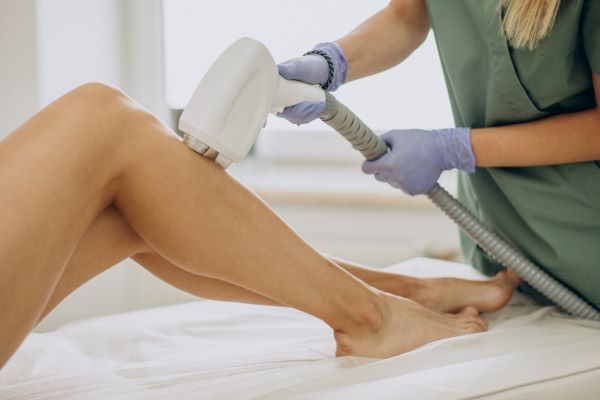
Does Gynecomastia Come Back After Surgery? What You Need To Know
As an expert cosmetic surgeon and a gynecomastia specialist, Dr. V.S. Rathore has helped many men achieve a well-sculpted chest through gynecomastia surgery. However, one of the most asked questions among his patients is — Does gynecomastia grow back after surgery?
This is a valid question, and you deserve to be at your best. So, before you make any decision, let’s break it down and address everything you need to know about gynecomastia recurrence, its causes, and how to prevent it.
Gynecomastia vs. Chest Fat
Do not confuse gynecomastia with excess chest fat. They might appear similar, but they are not the same.
- Gynecomastia is a benign condition caused by fibroglandular tissue growth in the male breast due to hormonal imbalances. It is palpable under the nipple and areola and doesn’t go away with exercise or diet.
- Chest fat (pseudogynecomastia) is simply fat accumulation. It can be reduced with weight loss and strength training.
Surgery is the only permanent fix for true gynecomastia, as it removes the glandular tissue responsible for the condition.
Understanding Gynecomastia Surgery
Gynecomastia surgery, or male breast reduction, involves:
- Liposuction – Removes excess fat from the chest area.
- Glandular tissue removal – Surgical elimination of the excess glandular tissue that causes gynecomastia.
The combination of these techniques ensures a flatter, firmer chest with long-term results.
Gynecomastia in Bodybuilders: A Unique Challenge
Bodybuilders face gynecomastia due to steroid or testosterone use. These substances disrupt hormone levels, leading to glandular tissue growth. Even after surgery, continued steroid use can trigger recurrence. That’s why bodybuilders and athletes must carefully manage their hormone levels post-surgery.
Is Gynecomastia Permanent?
Surgical removal of glandular tissue is permanent. Once it’s gone, it doesn’t grow back. However, gynecomastia can recur if cell infiltration or new glandular cells form due to hormonal changes, medication use, or other underlying factors.
What Do Studies Say?
Clinical studies indicate that true gynecomastia recurrence after complete gland removal is rare. According to a study published in the Aesthetic Plastic Surgery Journal, a mere 10% of patients experience a return of gynecomastia, and most cases are due to external factors like hormone imbalances or medication use.
Factors That Impact Gynecomastia Recurrence
Dr. Rathore says the recurrence of gynecomastia after surgery is a rarest of rare possibilities. Once the excess breast tissue is surgically removed, it cannot grow back to its fullest, even if a small amount of tissue is left uncut.
It is unlikely to return unless the following risk factors come into play:
- Hormonal Imbalances – Severe imbalance between androgen and estrogen.
- Medication Effect – Some drugs, like antidepressants or steroids, can cause glandular tissue to grow back.
- Weight Gain – While fat doesn’t cause gynecomastia, excessive weight gain can make the chest look fuller.
- Underlying Medical Conditions – Liver disease, thyroid disorders, or testicular issues can contribute to recurrence.

Seroma Formation Post-Surgery
Seroma formation is one of the most common complications after gynecomastia surgery. It occurs when fluid collects under the skin in the area where the glandular tissue or fat was removed.
Why Does Seroma Form After Gynecomastia Surgery?
During male breast reduction, surgeons remove excess fat and glandular tissue, creating a space under the skin. The body naturally reacts by filling this space with fluid, leading to a seroma.
Factors That Increase Seroma Risk
- Large gland removal – More extensive tissue removal creates a bigger empty space, increasing the chance of fluid buildup.
- Excessive movement post-surgery – Strenuous activities can disrupt the healing process, leading to seroma.
- Lack of proper compression – Compression garments help reduce fluid buildup by keeping the skin attached to underlying tissues.
- Insufficient drainage – In some cases, drains are needed to remove excess fluid.
How is Seroma Managed?
- Small seromas may resolve on their own as the body reabsorbs the fluid.
- Larger seromas may require needle aspiration (draining the fluid with a syringe).
- Severe or persistent seromas may need minor surgical intervention.
Can Seroma Lead to Gynecomastia Recurrence?
Seroma itself does not cause gynecomastia to come back. However, if left untreated, it can lead to scar tissue formation, contour irregularities, or prolonged swelling, making the chest appear uneven. This might make it seem like gynecomastia has returned, even though it hasn't.
How to Prevent Seroma Formation?
- Wear a compression garment as advised by your surgeon.
- Limit physical activity during the healing phase.
- Follow proper post-operative care, including drain management if required.
- Stay hydrated and eat a healthy diet to support healing.
While seroma is a temporary issue, proper post-surgical care can minimize the risk and ensure a smooth recovery after gynecomastia surgery.
Preventing Gynecomastia from Coming Back After Surgery
To ensure the best results, follow these preventive steps:
- Maintain a stable weight – Avoid excessive fat gain.
- Regulate hormone levels – Get your testosterone and estrogen levels checked periodically.
- Avoid trigger medications – If possible, switch to alternative treatments under medical supervision.
- Live a healthy lifestyle – Eat a balanced diet, exercise regularly, and reduce alcohol intake.
Now that you have an idea about the subject of gynecomastia after surgery, one further lingering concern is the cost of the treatment. Let's find out its worth!
Is Gynecomastia Surgery in Kolkata Worth the Cost?
The cost of gynecomastia surgery in Kolkata varies nearly between ₹50,000 to ₹1,50,000 (approx), depending on the surgeon’s expertise, hospital facility, and procedure complexity. Compared to other cities and economic ease, Kolkata offers affordable yet high-quality treatment.
If done by an experienced surgeon, the results are long-lasting, making it a worthwhile investment. However, choosing the right surgeon and following post-operative care are of utmost importance for the desired result.
Schedule a Consultation at Kaayakalp Clinic Today
Gynecomastia surgery is safe and effective and delivers permanent results if performed correctly. While recurrence is rare, it can happen due to external factors, as discussed above.
Investing in gynecomastia surgery is worth it if you’re looking for a long-term solution to a condition that affects confidence and quality of life. Choosing an experienced surgeon and taking preventive measures ensures that you stay gynecomastia-free for life.
If you’ve struggled with gynecomastia long enough, you know how frustrating and embarrassing it can be, and we understand the exhaustion. No need to hold back because of doubts; medical advancement has its proven assurance now.
Consult with our board-certified plastic surgeon, Dr. V.S. Rathore, and achieve a more chiseled chest.







